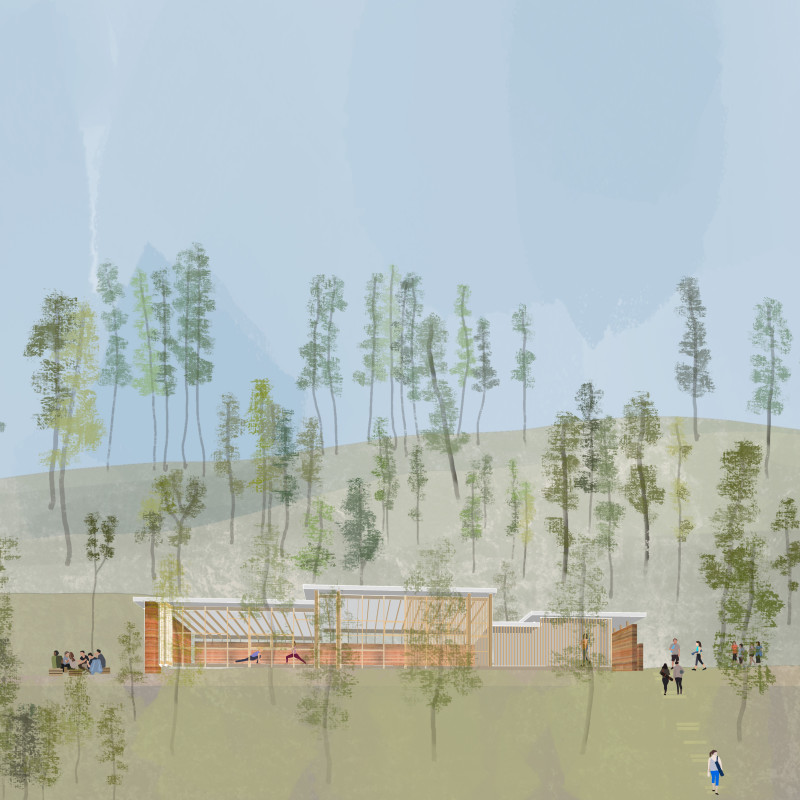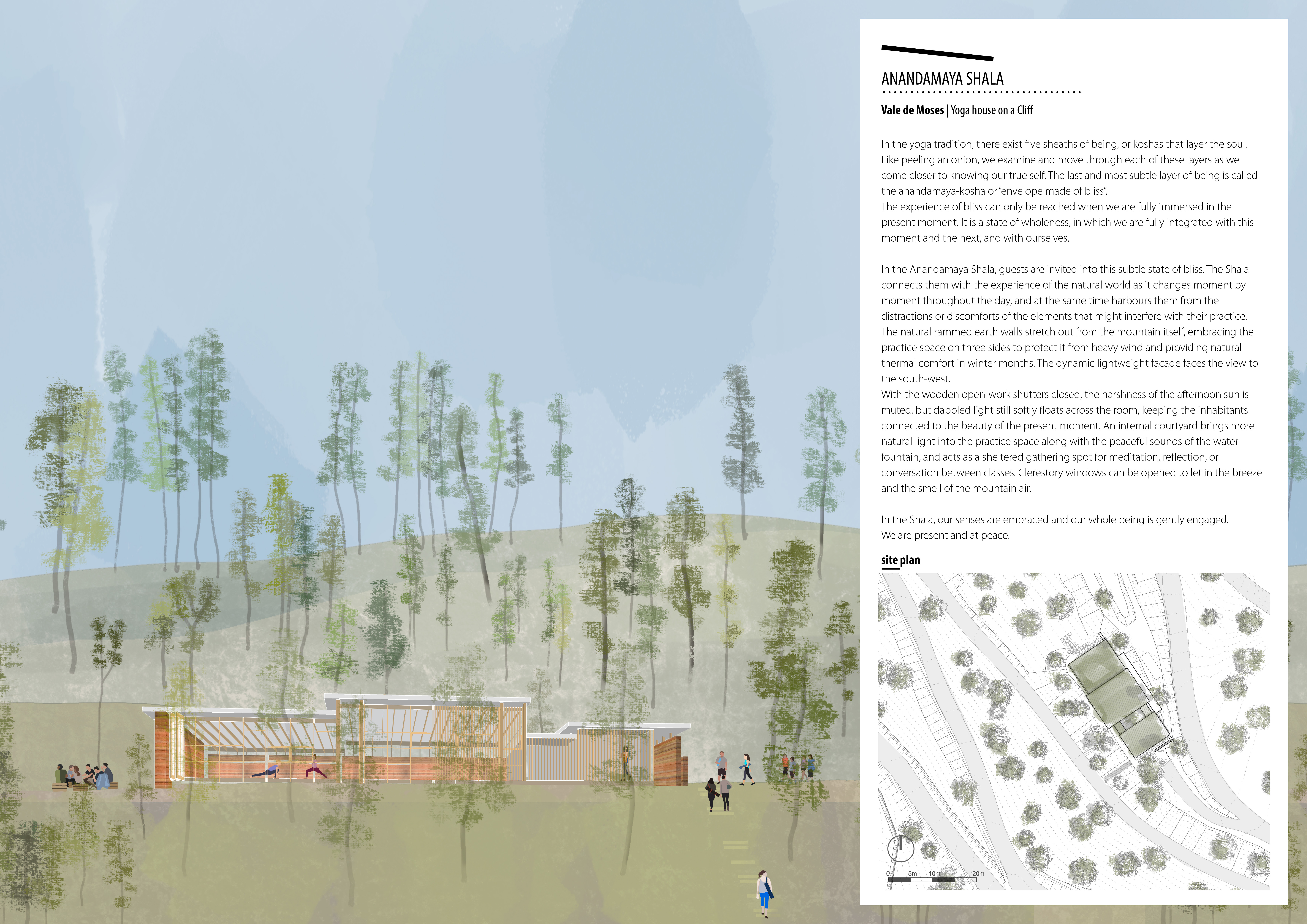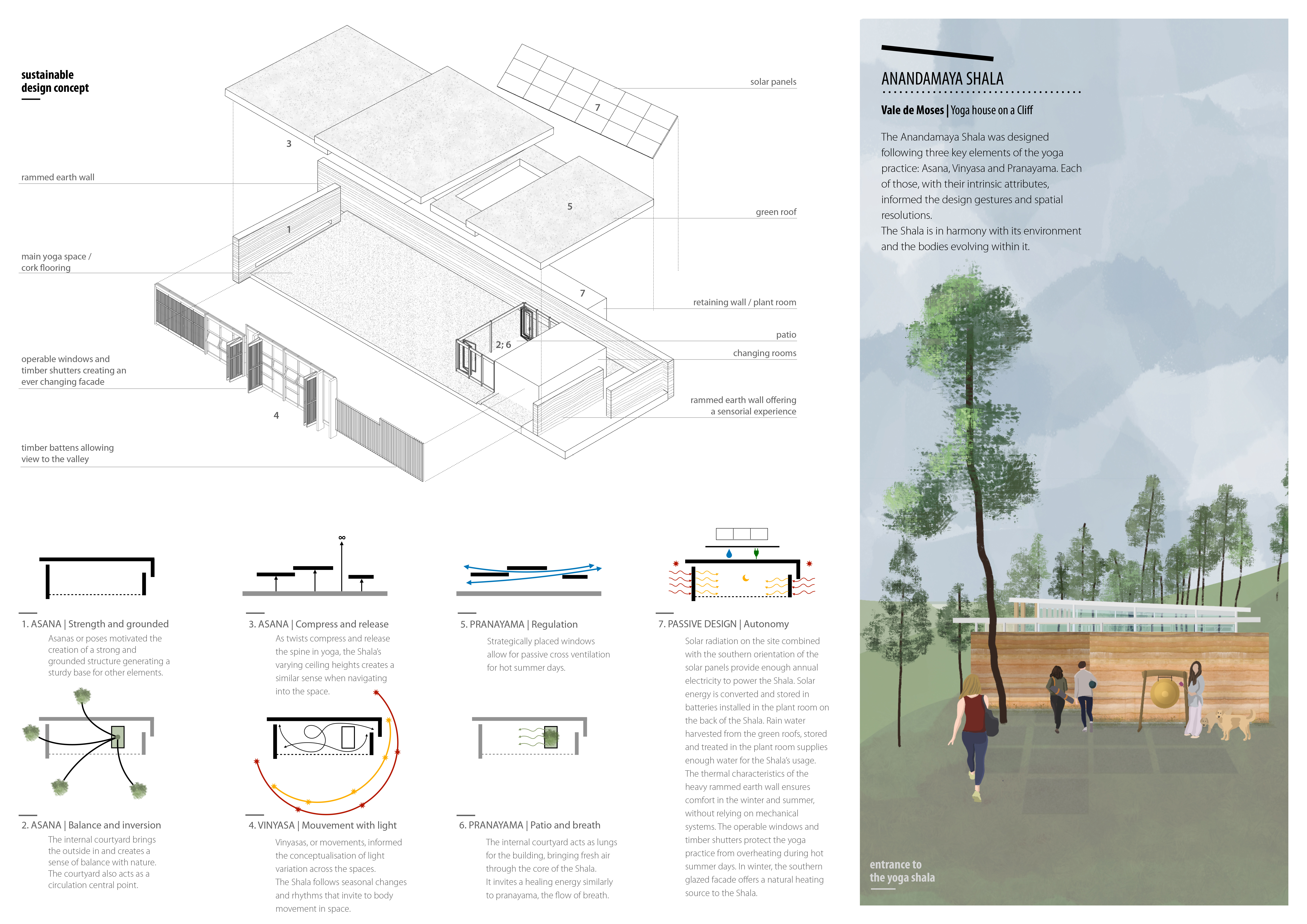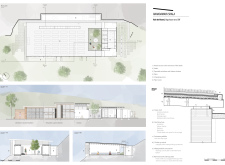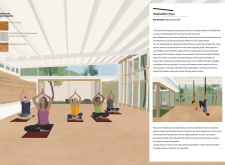5 key facts about this project
Anandamaya Shala, located in Vale de Moses, is a yoga facility designed to connect its users with nature. The building aims to provide a serene environment for yoga practice while encouraging personal exploration and mindfulness. It draws inspiration from the concept of the five sheaths of being, known as koshas, which influences the design concept focused on achieving a state of bliss.
Natural Connections
The design encourages engagement with the surrounding landscape while also offering privacy. Made from rammed earth, three walls provide a strong barrier against wind and cold, ensuring comfort throughout the year. Utilizing this material creates a solid connection to the site, grounding the building in its natural context and enhancing its sustainability.
Spatial Dynamics
A central feature of the Shala is the internal courtyard, which connects inside and outside spaces. This area allows natural light and calming sounds of water from a fountain to enter the building. Large clerestory windows are positioned to bring in ambient light and support ventilation, maintaining a pleasant atmosphere throughout the seasons.
Material Considerations
Material choices are vital to the Shala's design. Cork flooring offers comfort, making it ideal for yoga practice. Mountain larch timber is used for the window frames and ceilings, adding warmth to the interior. The rammed earth walls contribute to the overall thermal efficiency while creating visual interest with their textured surfaces.
Sustainability Initiatives
Sustainable features are integral to the design. Solar panels on the roof help to meet the energy needs of the building. Meanwhile, green roofs collect rainwater, reducing reliance on external water sources. These elements reflect a dedication to environmental responsibility and complement the Shala's emphasis on well-being.
Above the main practice area, beams stretch toward the clerestory windows, allowing soft, filtered light to brighten the space. This changing light creates a peaceful backdrop for meditation and movement, enhancing the overall experience for those who visit.


